| Date | Text | |
|---|---|---|
30 Nov 1910
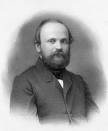
Robert Remak |
Robert Remak (mathematics) Robert Remak's doctoral dissertation Über die Zerlegung der endlichen Gruppen in indirekte unzerlegbare Faktoren establishes that any two decompositions of a finite group into a direct product are related by a central automorphism. |
|
30 Nov 1910

Eugen Bleuler |
Eugen Bleuler (medicine) Eugen Bleuler expands on his definition of schizophrenia as a condition distinct from Dementia praecox, in Dementia Praecox oder Gruppe der Schizophrenien. |
|
30 Nov 1910

Ernest Rutherford |
Ernest Rutherford (physics) Ernest Rutherford explains the Geiger–Marsden experiment and derives the Rutherford cross section by deducing the existence of a compact atomic nucleus from scattering experiments. He proposes the Rutherford model of the atom and demonstrates that J. J. Thomson's plum pudding model is incorrect. |
|
30 Nov 1910

Charles Wilson |
Charles Wilson (physics) Charles Wilson finishes a sophisticated cloud chamber. |
|
30 Nov 1910

Ponzo illusion |
Ponzo illusion (psychology) The Ponzo illusion, a geometrical-optical illusion, is first demonstrated by Italian psychologist Mario Ponzo. |
|
30 Nov 1910

John Joseph Rawlings |
John Joseph Rawlings (technology) John Joseph Rawlings files a United Kingdom patent for a wall plug. |
|
30 Nov 1910

Lewis |
Lewis (technology) The Lewis automatic light machine gun is invented by United States Army Colonel Isaac Newton Lewis, based on initial work by Samuel Maclean. |
|
30 Nov 1910

Nikolay Beketov |
death Nikolay Beketov December 13 (O.S. November 30) – Nikolay Beketov (born 1827), Russian chemist. |
|
03 Jan 1911

1911 Kebin earthquake |
1911 Kebin earthquake (earth sciences) 1911 Kebin earthquake: An earthquake of 7.7 moment magnitude strikes near Almaty in Russian Turkestan. |
|
17 Jan 1911

Sir Francis Galton |
death Sir Francis Galton Died 17 Jan 1911 at age 88 (born 16 Feb 1822). English anthropologist, eugenicist and statistician who was an investigator of intellectual ability and the founder of eugenics. He explored in south-western Africa. In meteorology, he was first to recognise and name the anticyclone. He interpreted the theory of evolution of (his cousin) Charles Darwin to imply inheritance of talent could be manipulated. Galton had a long-term interest in eugenics - a word he coined for scientifically selected parenthood to enable inheritance of beneficial characteristics. He coined the phrase “nature versus nurture.” Galton experimentally verified the uniqueness of fingerprints, and suggested the first classification based on grouping the patterns into arches, loops, and whorls. On 1 Apr 1875, he published the first newspaper weather map, in The Times. |
|
17 Jan 1911

Francis Galton |
death Francis Galton Sir Francis Galton (born 1822), English explorer and biologist. |
|
18 Jan 1911
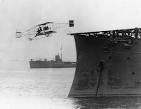
Eugene Ely |
Eugene Ely (technology) Eugene Ely lands on the deck of the USS Pennsylvania anchored in San Francisco Bay, the first aircraft landing on a ship. |
|
23 Jan 1911

Marie Curie denied Academy membership |
Marie Curie denied Academy membership In 1911, Marie Curie's nomination to the French Academy of Sciences, having already won one Nobel Prize, was nevertheless voted down by the Academy's all-male membership. Marie Curie was one of six candidates, of which only one was to be chosen. The result was 30 votes for M. Eduoard Branly, the inventor of the coherer for wireless telegraphy, and 28 for Mme. Curie. (The Branly coherer was such a critical factor in radio communication that Marconi selected him as the man to whom he sent the first message by wireless from England to France.) After the vote, an announcement was made to state that the vote did not reflect the attitude of the academy toward the admission of women in any sense, and the election was judged on merit for recognition. Curie went on to win a second Nobel Prize. |
|
26 Jan 1911

Polykarp Kusch |
birth Polykarp Kusch Polykarp Kusch (died 1993), German-born winner of the Nobel Prize in Physics. |
|
14 Feb 1911

Willem Johan Kolff |
birth Willem Johan Kolff Willem Johan Kolff (died 2009), Dutch inventor of hemodialysis. |
|
28 Feb 1911

Denis Burkitt |
birth Denis Burkitt Born 28 Feb 1911; died 23 Mar 1993 at age 82. Denis Parsons Burkitt was an Irish surgeon and medical researcher who first identified Burkitt's lymphoma. In 1957, in Uganda, Burkitt found several children suffering from fast-spreading tumours in the head and neck. When they died within weeks, Burkitt recognised this was a previously undescribed cancer disease. He showed that these and all cases were characterized by infiltration of the affected tissues by lymphocytes. With colleagues Edward Williams and Clifford Nelson, he plotted the geographical incidence of the disease, and found it in the same areas endemic with malaria. This survey is regarded as one of the pioneering studies of geographical pathology. Burkitt helped to develop chemotherapy for the disease. Later, he championed high fibre diets. |
|
01 Mar 1911

Frederick Winslow Taylor |
Frederick Winslow Taylor (other s) May – A serialized version of Frederick Winslow Taylor's monograph, The Principles of Scientific Management appears in The American Magazine, boosting the efficiency movement. |
|
01 Mar 1911

Jacobus van 't Hoff |
death Jacobus van 't Hoff Jacobus van 't Hoff (born 1852), Dutch chemist. |
|
13 Mar 1911
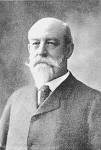
H. P. Bowditch |
death H. P. Bowditch Died 13 Mar 1911 at age 70 (born 4 Apr 1840). Henry Pickering Bowditch was an American physiologist who established first teaching laboratory of physiology in U.S. (1871). He discovered the 'all-or-none' law of muscle contraction (1871), and the indefatigability of nerves (1890). He was the grandson of Nathaniel Bowditch. |
|
26 Mar 1911

Bernard Katz |
birth Bernard Katz Bernard Katz (died 2003), German-born winner of the Nobel Prize in Physiology or Medicine. |
|
30 Mar 1911

Ellen Swallow Richards |
death Ellen Swallow Richards Died 30 Mar 1911 at age 68 (born 3 Dec 1842). American chemist (née Ellen Henrietta Swallow) who was the founder of the home economics movement in the United States. She was the first woman admitted to the Massachusetts Institute of Technology (MIT), graduated with a B.S. in 1873, and stayed on as a chemistry assistant. She set to work analyzing Boston's water supply. In Nov 1876, she created the Woman's Laboratory at MIT where women could learn the rudiments of science. In 1884, MIT made Richards its first woman faculty member. She helped develop a new curriculum in air, water, and sewage chemistry. However, she also saw the home and child-rearing as complex and important work, saying the women who did it should be educated. She spent thirty years developing the concept of domestic science. |
|
03 Apr 1911

Michael Woodruff |
birth Michael Woodruff Michael Woodruff (died 2001), English pioneer of organ transplant surgery. |
|
06 Apr 1911

Feodor Felix Konrad Lynen |
birth Feodor Felix Konrad Lynen Feodor Felix Konrad Lynen (died 1979), German winner of the Nobel Prize in Physiology or Medicine. |
|
08 Apr 1911

Heike Kamerlingh Onnes |
Heike Kamerlingh Onnes (physics) Heike Kamerlingh Onnes discovers the phenonomena of superconductivity. |
|
08 Apr 1911

Melvin Calvin |
birth Melvin Calvin Melvin Calvin (died 1997), American winner of the Nobel Prize in Chemistry. |
|
18 Apr 1911

Maurice Goldhaber |
birth Maurice Goldhaber Maurice Goldhaber (died 2011), Austrian-born physicist. |
|
19 May 1911

Parks Canada |
Parks Canada (conservation) Parks Canada, the world's first national park service, is established as the Dominion Parks Branch under the Department of the Interior. |
|
21 May 1911
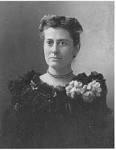
Williamina Fleming |
death Williamina Fleming Williamina Fleming (born 1857), American astronomer. |
|
22 May 1911

Anatol Rapoport |
birth Anatol Rapoport Anatol Rapoport (died 2007), Russian-born mathematical psychologist. |
|
24 May 1911

Ernst Remak |
death Ernst Remak Ernst Remak (born 1849), German neurologist. |
|
05 Jun 1911

Charles F. Kettering |
Charles F. Kettering (technology) Charles F. Kettering files a United States patent for an electric starter motor. |
|
13 Jun 1911

Luis Alvarez |
birth Luis Alvarez Luis Alvarez (died 1988), American winner of the Nobel Prize in Physics. |
|
24 Jun 1911

Domenico Pacini |
Domenico Pacini (physics) Domenico Pacini runs a series of measurements of underwater ionization in the Gulf of Genoa, demonstrating that the radiation later recognised as cosmic rays cannot be originated by the Earth's crust. |
|
25 Jun 1911

William H. Stein |
birth William H. Stein Born 25 Jun 1911; died 2 Feb 1980 at age 68. William Howard Stein was an American biochemist who (with Stanford Moore and Christian B. Anfinsen) was a cowinner of the Nobel Prize for Chemistry in 1972 for their studies of the pancreatic enzyme ribonuclease. Stein, with Moore, investigated the connection between its chemical structure and the catalytic activity of the active centre of the ribonuclease molecule. Between 1949 and 1963, they developed methods for the analysis of amino acids and peptides obtained from proteins, determined the structure of ribonuclease, and it catalyzes the digestion of food. By 1972, they had also worked out the complete sequence of deoxyribonuclease, a molecule twice as complex as ribonuclease. |
|
25 Jun 1911

William Howard Stein |
birth William Howard Stein William Howard Stein (died 1980), American winner of the Nobel Prize in Chemistry. |
|
28 Jun 1911

Nakhla meteorite |
Nakhla meteorite (astronomy and space ) The Nakhla meteorite (from Mars) lands in the area of Alexandria, Egypt, purportedly killing a dog. |
|
04 Jul 1911

Frederick Seitz |
birth Frederick Seitz Frederick Seitz (died 2008), American solid-state physicist. |
|
05 Jul 1911

Emil L. Smith |
birth Emil L. Smith Emil L. Smith (died 2009), American biochemist who studied protein structure and function as well as biochemical evolution. |
|
09 Jul 1911
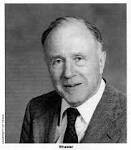
John A. Wheeler |
birth John A. Wheeler John A. Wheeler (died 2008), American theoretical physicist. |
|
09 Aug 1911

William A. Fowler |
birth William A. Fowler William A. Fowler (died 1995), American winner of the Nobel Prize in Physics. |
|
15 Aug 1911

Crisco |
Crisco In 1911, Procter & Gamble Company of Cincinnati, Ohio, introduced Crisco, a hydrogenated shortening to provide an economical alternative to animal fats and butter. To emphasize the purity of the product within, the Crisco can came inside an additional, removable over-wrap of white paper. Crisco, the first solidified shortening product made entirely of vegetable oil, was the result of hydrogenation, a new process which produced shortening that would stay in solid form year-round, regardless of temperature. |
|
29 Sep 1911

R. V. Jones |
birth R. V. Jones R. V. Jones (died 1997), English physicist, expert in electronic military defence. |
|
01 Oct 1911
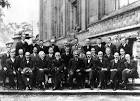
Solvay Congress |
Solvay Congress (physics) The first Solvay Congress of physicists convenes. |
|
05 Oct 1911

Pierre Dansereau |
birth Pierre Dansereau Pierre Dansereau, French Canadian ecologist. |
|
04 Nov 1911

MS Selandia |
MS Selandia (technology) MS Selandia, the first large ocean-going diesel ship, is launched in Denmark; Ivar Knudsen is the diesel engineer. The 1909-launched Dutch diesel tanker Vulcanus also enters service this year. |
|
27 Nov 1911
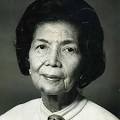
Fe del Mundo |
birth Fe del Mundo Fe del Mundo (died 2011), Filipino pediatrician and National Scientist of the Philippines. |
|
10 Dec 1911
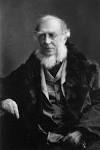
Joseph Dalton Hooker |
death Joseph Dalton Hooker Joseph Dalton Hooker (born 1817), English botanist. |
|
14 Dec 1911

Norwegian |
Norwegian (exploration) Norwegian explorer Roald Amundsen and a team of four become the first people to reach the South Pole. |
|
22 Dec 1911
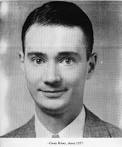
Grote Reber |
birth Grote Reber Born 22 Dec 1911; died 20 Dec 2002 at age 90. U.S. amateur astronomer and radio engineer who self-financed and built the first radio telescope. He pioneered the new field of radio astronomy, and was the first to systematically study the sky by observing non-visible radiation. After reading about Jansky's discovery (1932) of natural radio emissions from space, Reber constructed a 9-meter dish antenna in his back yard and built three different detectors before finding 160 MHz signals (1939). In 1940 and 1944 he published articles titled Cosmic Static in the Astrophysical Journal. He was the first to express received radio signals in terms of flux density and brightness, first to find evidence that galactic radiation is non-thermal, and first to produce radio maps of the sky (1941). |
|
23 Dec 1911

Niels Kaj Jerne |
birth Niels Kaj Jerne Niels Kaj Jerne (died 1994), English-born Danish winner of the Nobel Prize in Physiology or Medicine. |
|
29 Dec 1911
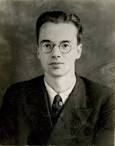
Klaus Fuchs |
birth Klaus Fuchs Born 29 Dec 1911; died 28 Jan 1988 at age 76. Emil Klaus Julius Fuchs was a German-British physicist who was convicted as a spy on 1 Mar 1950, for passing nuclear research secrets to Russia. He fled from Nazi Germany to Britain. He was interned on the outbreak of WW II, but Prof. Max Born intervened on his behalf. Fuchs was released in 1942, naturalized in 1942 and joined the British atomic bomb research project. From 1943 he worked on the atom bomb with the Manhattan Project at Los Alamos, U.S. By 1945, he was sending secrets to Russia. In 1946, he became head of theoretical physics at Harwell, UK. He was caught, confessed, tried, imprisoned for nine of a 14 year sentence, released on 23 Jun 1959, and moved to East Germany and resumed nuclear research until 1979. |